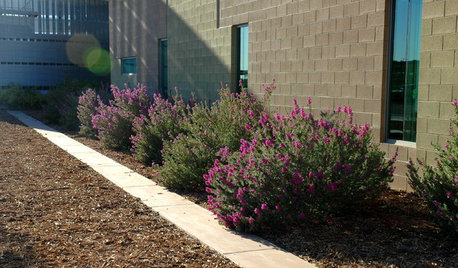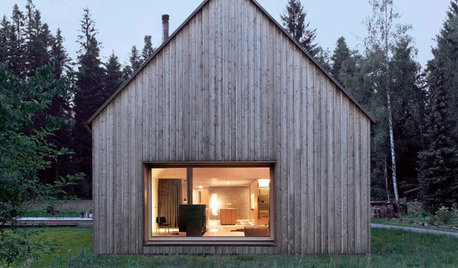Killing Everything but a few Trees and Shrubs
aloha2009
12 years ago
Related Stories

GARDENING GUIDESHow to Avoid Overcrowded, Overpruned Shrubs
Go for a more natural look that’s easier and less expensive to maintain by giving your plants the right amount of growing room
Full Story
GARDENING GUIDES10 Drought-Tolerant Shrubs That Thrive in Full Sun and Reflected Heat
Got a hot spot in your garden where plants often die? Try these tough shrubs that add beauty while shrugging off the heat
Full Story
HOUSEPLANTS8 Houseplants You Can't Kill
They're forgiving and let you forget. Houseplants don't get any easier than this
Full Story
MOST POPULARThe Perfect Houseplant for People Who Kill Houseplants
If you can fill a jar with water, you can keep golden pothos vine happy — and it will pay you back with cleaner air and a greener home
Full Story
MOST POPULARA Few Words on the Power of Simplicity
An architect considers a pared-down approach to modern home design
Full Story
GARDENING GUIDES8 Native Shrubs for Year-Round Bird Feeding
It’s not just about berries. These plants provide insects for birds and seasonal interest for gardeners
Full Story
GARDENING GUIDES8 Deer-Resistant Elegant Evergreen Shrubs to Plant This Fall
Who knew that such beautiful shrubs could be deer-resistant?
Full Story
FALL GARDENING9 Deer-Resistant Flowering Shrubs to Plant This Fall
These exquisite shrubs will attract your attention but won’t tempt the deer that roam your neighborhood at night
Full Story
GARDENING GUIDESHow to Prune Your Flowering Shrubs for the Best Blooms
Less is often more when it comes to properly pruning flowering shrubs. Here’s what to do and why
Full Story
MOST POPULARThe Unexpected Color That Goes With Everything
Move over, beige. Green is staking its claim as the freshest neutral around
Full StorySponsored
Columbus Design-Build, Kitchen & Bath Remodeling, Historic Renovations
More Discussions







gjcore
Skybird - z5, Denver, Colorado
Related Professionals
70037 Landscape Architects & Landscape Designers · Forest Park Landscape Architects & Landscape Designers · Cedar Hill Landscape Contractors · Cicero Landscape Contractors · East Haven Landscape Contractors · Golden Landscape Contractors · Hurricane Landscape Contractors · Mercedes Landscape Contractors · Mesa Landscape Contractors · Methuen Landscape Contractors · Petaluma Landscape Contractors · Tehachapi Landscape Contractors · Vashon Landscape Contractors · Lauderdale Lakes Landscape Contractors · Wasco Solar Energy Systemsaloha2009Original Author
david52 Zone 6
aloha2009Original Author
Skybird - z5, Denver, Colorado
aloha2009Original Author
Skybird - z5, Denver, Colorado
david52 Zone 6
aloha2009Original Author
amester
Dan _Staley (5b Sunset 2B AHS 7)
Skybird - z5, Denver, Colorado
aloha2009Original Author
Dan _Staley (5b Sunset 2B AHS 7)
Skybird - z5, Denver, Colorado
aloha2009Original Author
aloha2009Original Author
david52 Zone 6
aloha2009Original Author
aloha2009Original Author